As a VR fan, what is the appeal of an in-person VR attraction? Everywhere from arcades to purpose-built venues adopted the technology to allow a curious public the opportunity to jump into the world of VR, all without dropping the money necessary to buy a headset of their own. For these people, this is a window into a whole new world. Do they offer an allure to those already invested in VR?
Japan hosts a considerable variety of such VR attractions, targeting a wide range of demographics through both original experiences and collaborations with major IP. While many simply license work from VR studios both at home and abroad, Tyffonium, which operates in both Shinjuku and Odaiba, is unique. These spaces are owned and operated by the exclusive developer of all their attractions, Japanese VR studio Tyffon.
This vertical integration allows the team to tailor experiences blending commercial headsets like Meta Quest and HTC Vive with 4D motion sensors within free-roaming arena spaces, transforming its exclusive attractions into unique full-body experiences. These range from original ideas where guests swim through the depths of the ocean in Fluctus, to licensed affairs inspired by Ultraman and the 2017 Stephen King movie adaptation of It. Tyffonium’s goal is to not only craft ‘captivating new worlds with immersive virtual reality’, but to make these worlds accessible even to virtual reality newcomers.
Tyffonium invited us to visit their two locations to try these experiences for ourselves. From the five VR attractions they offer, are these stores worth finding time to visit during your next holiday to Japan? Here’s what we thought.
Fluctus
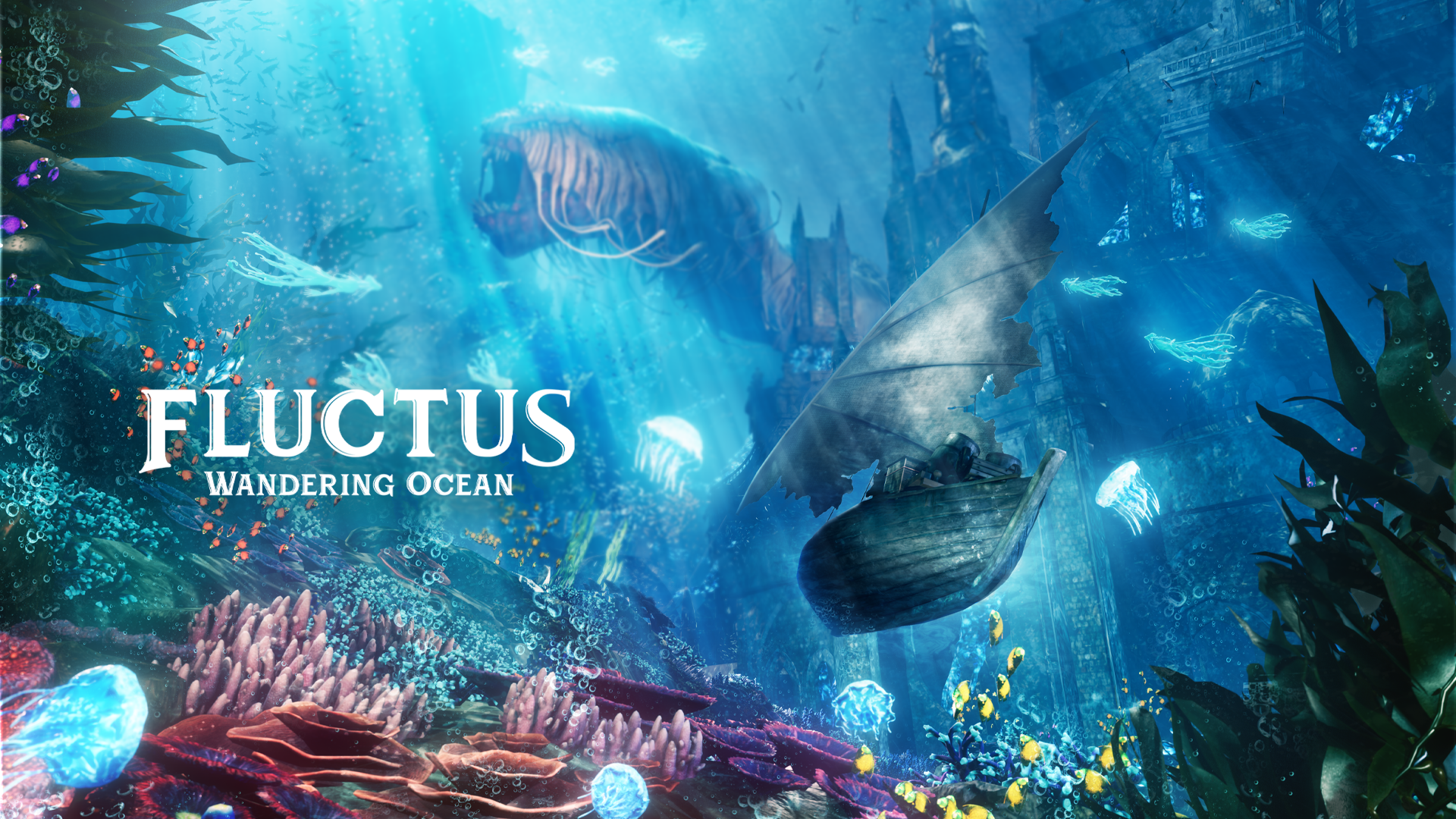
Fluctus is a seafaring, fully seated on-rails experience. An introductory narration and animated video establish the premise, with narration discussing a mysterious Bermuda Triangle-esque area of the sea from which all who visit have perished. You are the latest person seeking to uncover its mysteries. Placed in a boat, you’re trapped amidst a storm as you approach this area when your boat falls through a whirlpool underneath the water’s surface. Rather than drowning, however, you’re guided by a baby jellyfish through the vibrant ocean floor before uncovering Fluctus, an undersea city full of great wonders, and even greater threats.
Although enhanced by a 360-degree view of the ocean floor and a 4D sensual experience as the wind blows and your chair vibrates to every bump of your boat, Fluctus was perhaps the most disappointing experience on offer. That’s mostly due to the passive nature of the events on screen. Unlike other attractions, there are few ways for the player to interact with the experience beyond playing with your jellyfish companion. This is done using hand gestures, opening your hand to call it to your side before pushing it towards glowing objects around you to interact.
There are no branching paths or choices like other attractions, and the boat moves slowly enough that often you can see what’s coming long before you approach it. This removes tension once the adventure takes a more thrilling, threatening direction towards the end. It offers enough for first-time VR users to feel a sense of wonder simply in seeing this underwater world, especially with its 4D enhancements. Anyone more experienced will likely feel bored in this otherwise-brief 10-minute excursion.
Kaiju Haven VR
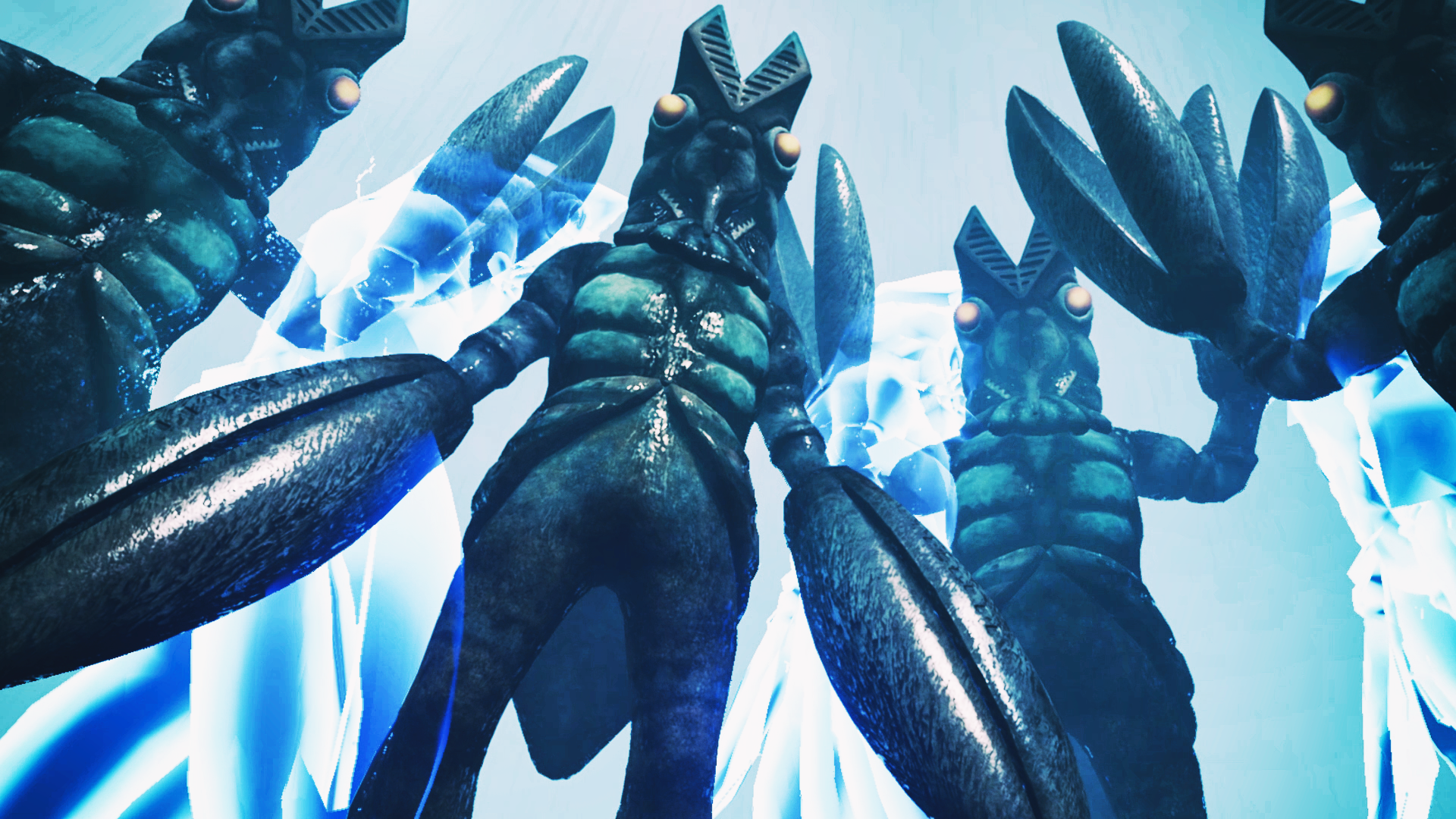
Kaiju Haven is one of two licensed attractions from Tyffonium inspired by Tsuburaya Production’s Ultraman IP. Despite this, Ultraman himself doesn’t show up during the experience. The stars of the show are the various kaiju encountered throughout the series, particularly Ultra Q and other early entries of the series from the ’60s and ’70s.
This experience heavily resembles Pokémon Snap, as you travel through a portal to the world of kaiju, scanning those you find to collect their data for later scientific analysis. You take the wheel of a self-driving buggy driving through lush jungles and encounter iconic creatures like Pigmon, Zetton, Red King and more. Scanning these creatures involves pointing your controller at these kaiju as soon as you spot them and holding the trigger until the scan is complete. Upon completion, you’re rewarded with brief facts about each creature, such as height and weight.
Despite being another seated attraction, this is far more engaging as you actively take in the world around you to find these hidden creatures, letting you appreciate the environmental details and love with which these kaiju have been brought to life. However, it’s very simple and while it was fun to see recognizable monsters as a tokusatsu and classic kaiju fan, those less familiar will likely find the designs unusual and confusing, and the experience shallow.
The creatures you encounter are supposedly randomized, with the promise of a unique experience every time. While fun in concept and a cool way to keep it feeling fresh, almost all attendees won’t experience the attraction more than once. It would likely be disappointing to pay money only to find your beloved Kanegon didn’t appear in your journey through this kaiju world.
Even still, I enjoyed my trip to this Kaiju Haven. The grin I had upon seeing Gomora in VR was enough to convince me this attraction was worth my time, even if this simplistic reason perhaps confirms that only fans of the franchise should choose this attraction.
Tarot VR
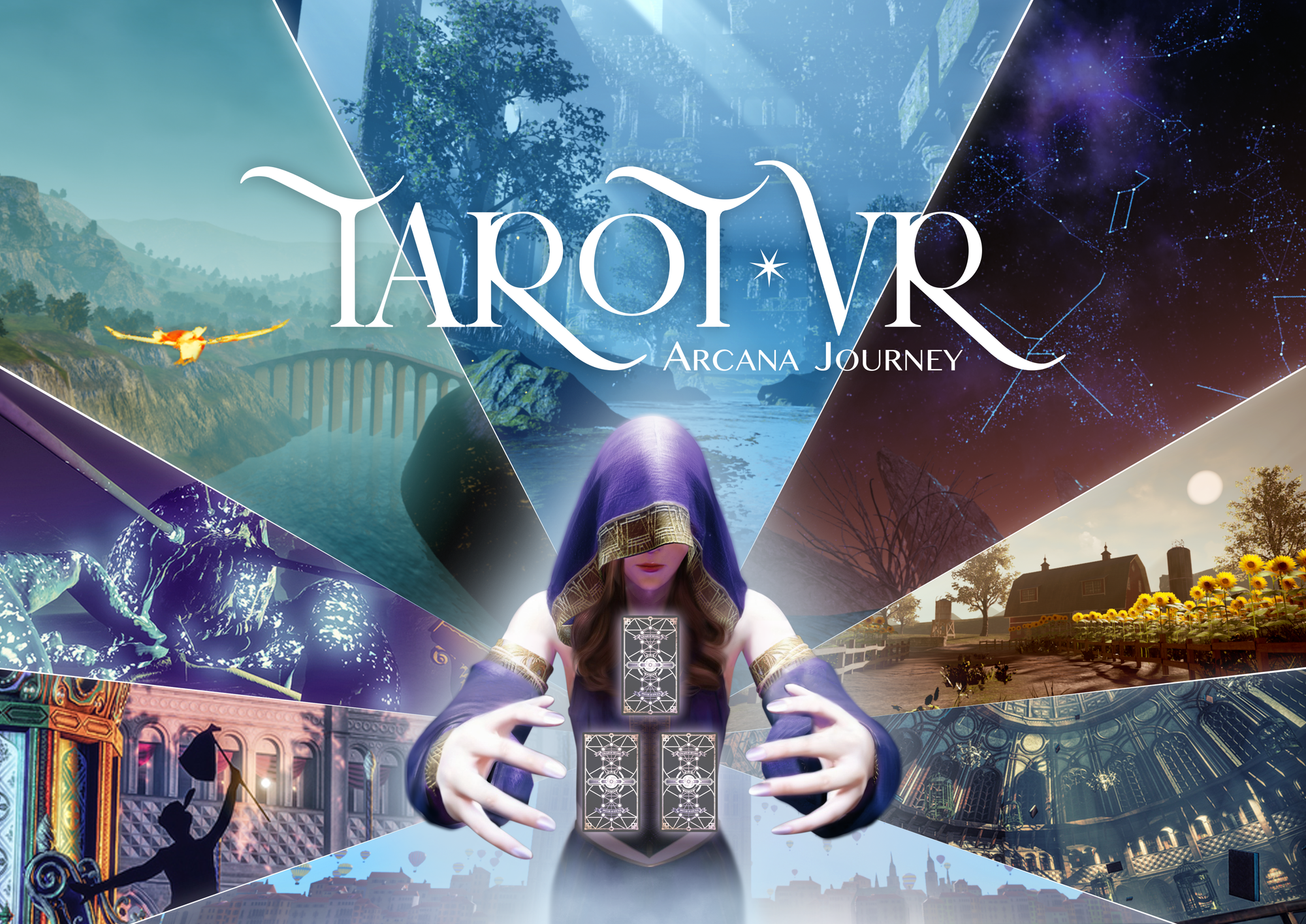
Tarot VR is the final sit-down attraction offered by Tyffonium, and certainly its most interesting. Upon entering the Tarot Reader’s chamber, she will ask you to pick three random cards representing your past, present, and future. From there, you enter one of 22 worlds based on each tarot card, experiencing the card’s meaning in full 3D before receiving a written blurb exploring the card’s meaning.
I was initially skeptical of the value of a VR tarot reading, yet this enjoyable experience left me awestruck and somewhat converted on tarot cards even beyond the world of the headset. My past was represented by The Tower, a towering structure representing the overbearing anxiety and stress of a past that crumbled under the pressure it exerted on my soul. If that’s not representative of the experience of working as a journalist, nothing is.
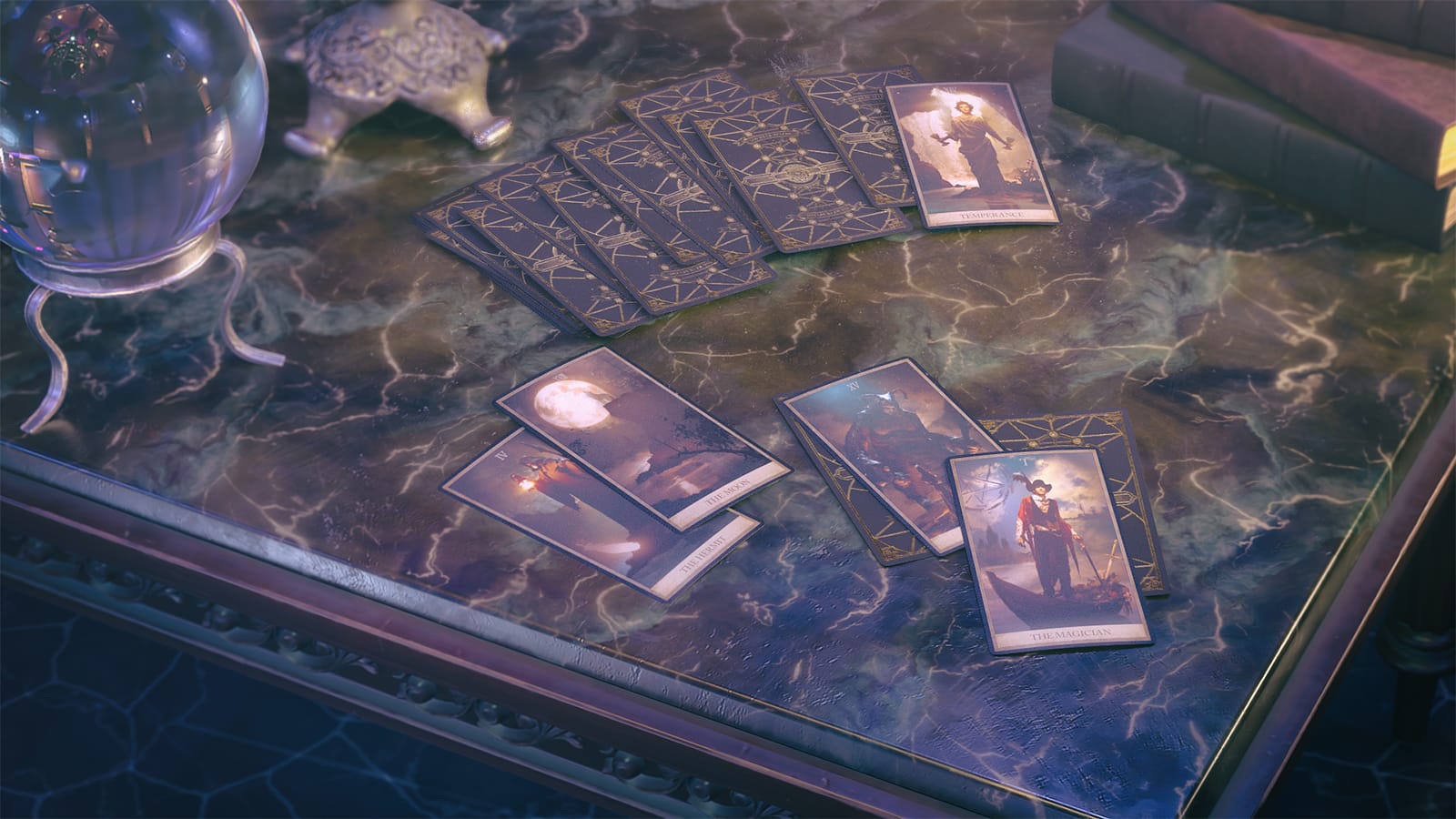
My present was described by the dreams of The Star, a card embodying the emergence from a troubled past to finding wonder in the everyday and the imagination of a future goal. Even if actually achieving such ambitions may seem further away in the short term. Strength represented my future, shown in Tarot VR via a roller coaster journey through a theme park not dissimilar in visual design to that found in NieR Automata, before taming a shadowy lion with my wand. It prophesies inner strength and the courage needed to tame future challenges.
A cynic can say that tarot readings are vague enough to be universal, but these truly felt accurate to my life experiences. Even beyond that, these vignettes were lovingly crafted and impressive to behold. Those who take part also receive physical tarot cards for their selection, a physical memento that will no doubt spark conversations with friends long after the headset has been removed.
Corridor
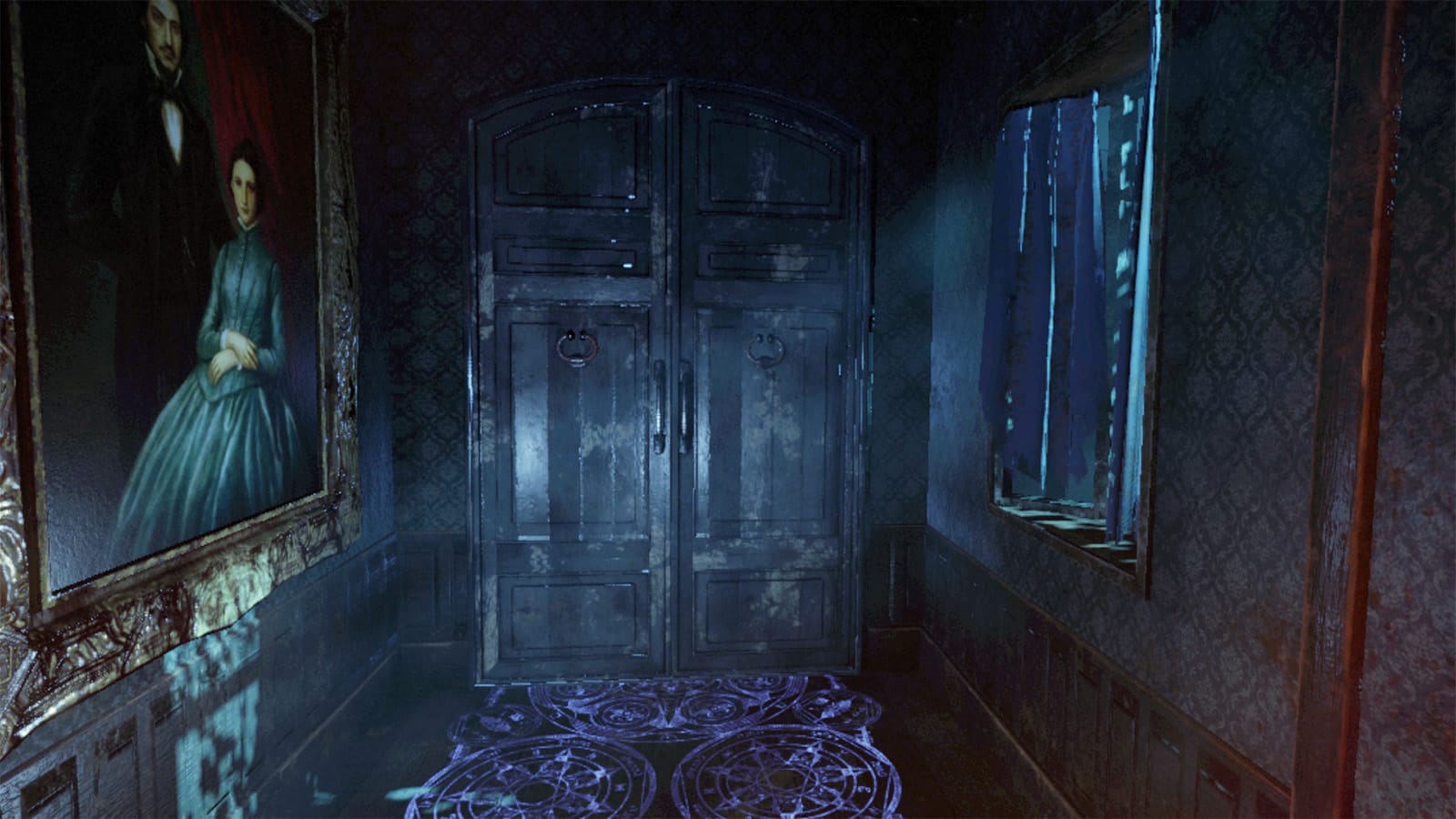
The first of two free-walking attractions, this horror experience asks players to wander through the depths of an abandoned mansion to discover the truth of its missing family. This is unlike anything possible in the comfort of your home. Upon entering a large room, you must put on the headset and take a hold of the small candelabra (controller) to navigate this dimly lit haunted house. That’s also used to light one of two candles at various moments, selecting one of two converging paths.
A small purple path glows beneath your feet to guide you through the experience, but you’re otherwise free to proceed at your own pace. While things at first seem normal, if somewhat unnerving, things quickly descend into terrifying supernatural horror. The walls and floor transform into the intestines of a monster, and zombie-like creatures chase you at every turn.
Horror games succeed in VR thanks to the medium’s immersive nature, but the fact you aren’t physically moving through these spaces places a barrier between you and these worlds, limiting their terrifying potential. Merely walking through this space is enough to place you in these dingy corridors. Coupled with the entire floor vibrating as you fall down the elevator shaft or squelch through blood, your heart rate spikes when merely turning a corner feels like a fight for survival.
This is genuinely terrifying, and the use of physical effects alongside is enough to leave you feeling helpless in the face of the terror that unfolds. Not for the faint of heart, but more than worth the price of admission for the fear its free-roaming movement injects. And don’t worry, you’ll receive a free photo and video of this experience, so you can see how terrified you were for yourself.
It Chapter Two: Carnival
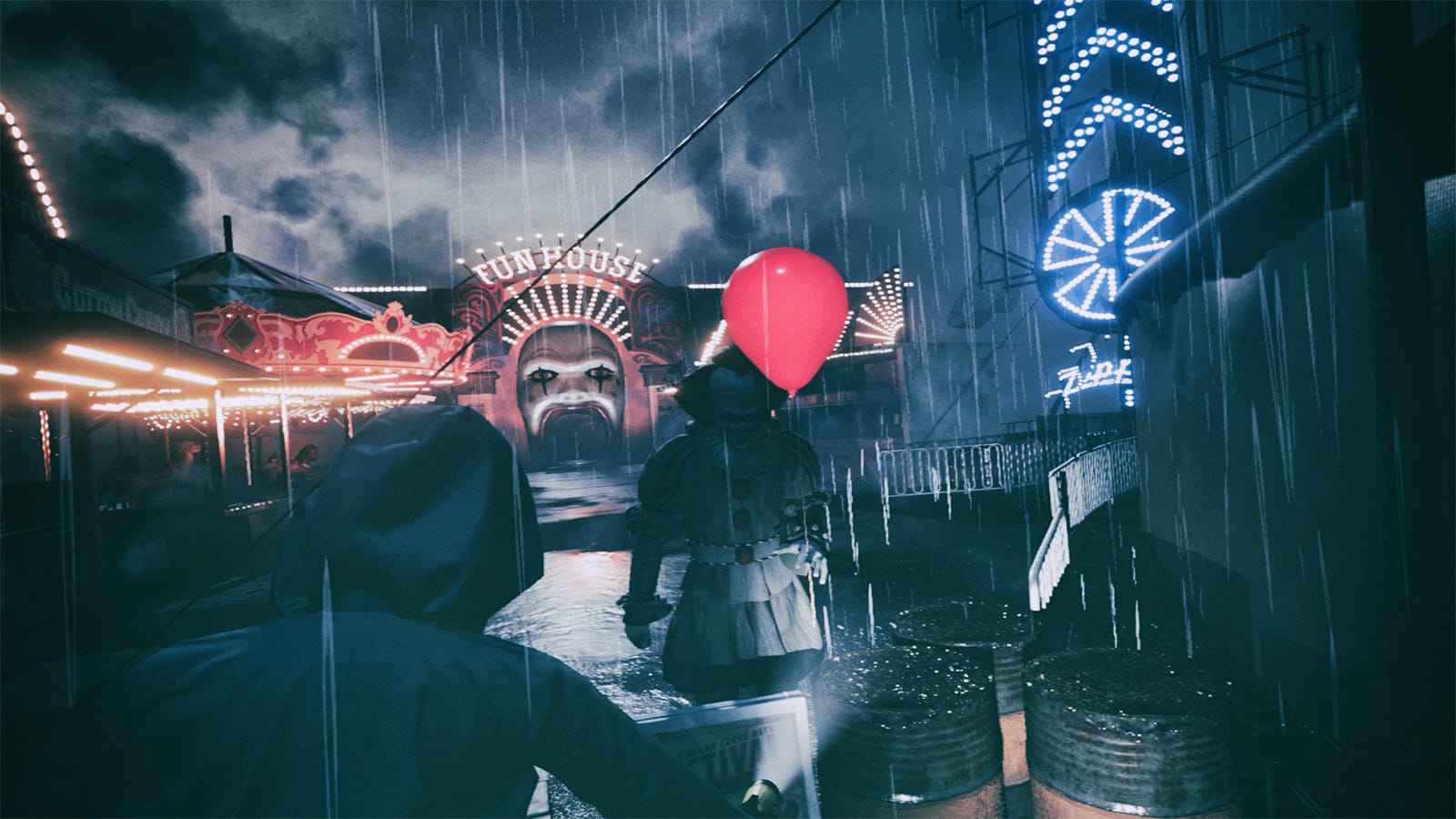
While Corridor is an engaging experience in its own right, It Chapter 2: Carnival, based on the Hollywood films of the same name, felt superior in nearly every aspect. This experience learned lessons from its development to enhance the horror and 4D immersive aspects of the ride.
Designated as an official prequel taking place the night before the events of It Chapter Two, a young boy named Tony has gone missing at a nearby circus. As you investigate his whereabouts, you find yourself inevitably sucked into Pennywise’s game until you begin to doubt what’s real and what isn’t in this psychological horror experience.
Almost every aspect has been improved in the years since the team’s work on Corridor and this game. The purple glowing route on the floor in Corridor, while a necessary guide for inexperienced players in that title, feels immersively detrimental to the old-timey mansion in which the experience was set. By contrast, Pennywise’s red balloon offers an in-universe method of guiding the player without breaking the established rules. Such a guide only enhances that sense of dread, knowing this balloon is leading you towards a particularly terrifying clown.
The visual effects are also a step-up, most notably in the attraction’s on-rails roller coaster segment. Reaching a branching path requires you choose one of two ride vehicles to progress, while these coasters whisk you along a set track through various jump scares and deeper into this mental abyss. I feel like I’m actually standing inside the vehicle with each twist, turn, and increase in speed as it increasingly careened itself towards danger, to the point where I almost lost my balance towards the climax.
Crawling through dingy caves and sewer pipes offered greater physical excursion and variety than that found in Corridor, with Pennywise being animated with such expressive precision it feels like the real actor was staring you in the face. It’s enough to make your heart stop.
From the moving floorboards to the slow, harrowing exploration of the circus, no VR experience has felt as immersive or terrifying. Which is both impressive and, considering the events of the film, somewhat disquieting.
Should You Experience Tyffonium VR?
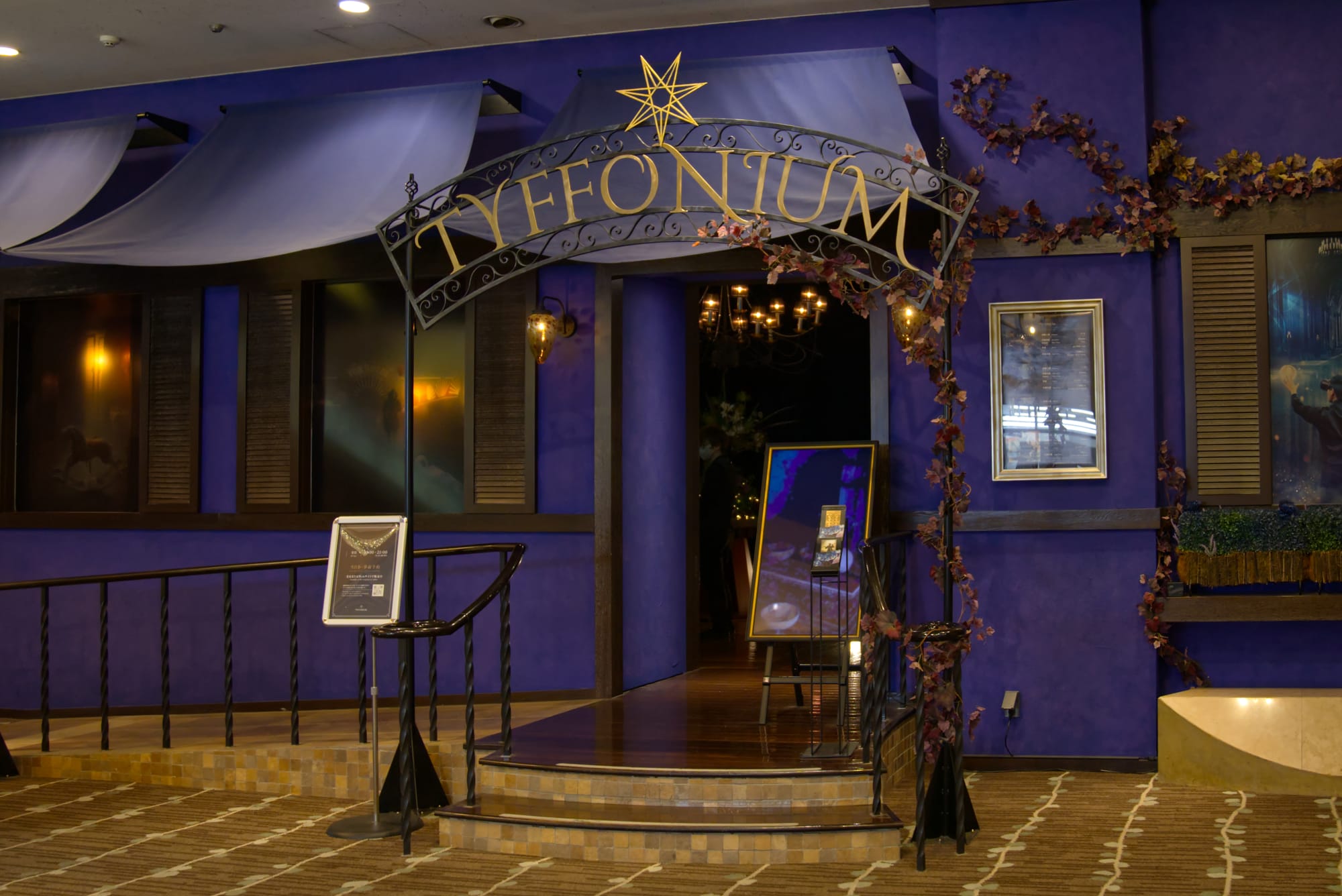
Tyffonium is an interesting proposition. These experiences exist in bespoke stores whose unique outer design makes an immediate impression, tempting potential audiences like purple-hued portals into a world of magic. Once you step inside, the candle-lit sets and plush seating only reinforces this feeling, and that’s before you put on the VR headset. The staff do everything possible to enhance this feeling, and are both animated and accommodating to everyone during the necessary setup, whether you speak English or Japanese. All experiences are bilingual, making them very welcoming to tourists.
Still, it’s hard not to feel like something is missing, and a quick glance through the company’s history makes this apparent.
With Japan’s tourism industry growing and intrigue in VR high, Tyffonium launched under the concept of offering bespoke experiences inside a fully immersive VR theme park. Their now-closed Shibuya store offered beverages and snacks to guests as they waited for their ride, a concept they expanded in late 2019 with a themed café inside the Shibuya PARCO department store offering AR parfait experiences. The company has international investment from companies like Disney, and discussed US expansion in 2019.
Considering the international adoration for the It films, it’s hard not to imagine this experience was developed in part as an attraction with name recognition for their growing international audience. Yet by the time the experience launched in October 2020, the COVID-19 pandemic banned international tourists from visiting Japan. By this point, the pandemic had already impacted the company strongly, with the PARCO café and AR parfait closing in summer 2020 before the Shibuya store closed in early 2021. None of the remaining Tyffonium locations have since revisited the café and AR parfait experiences.
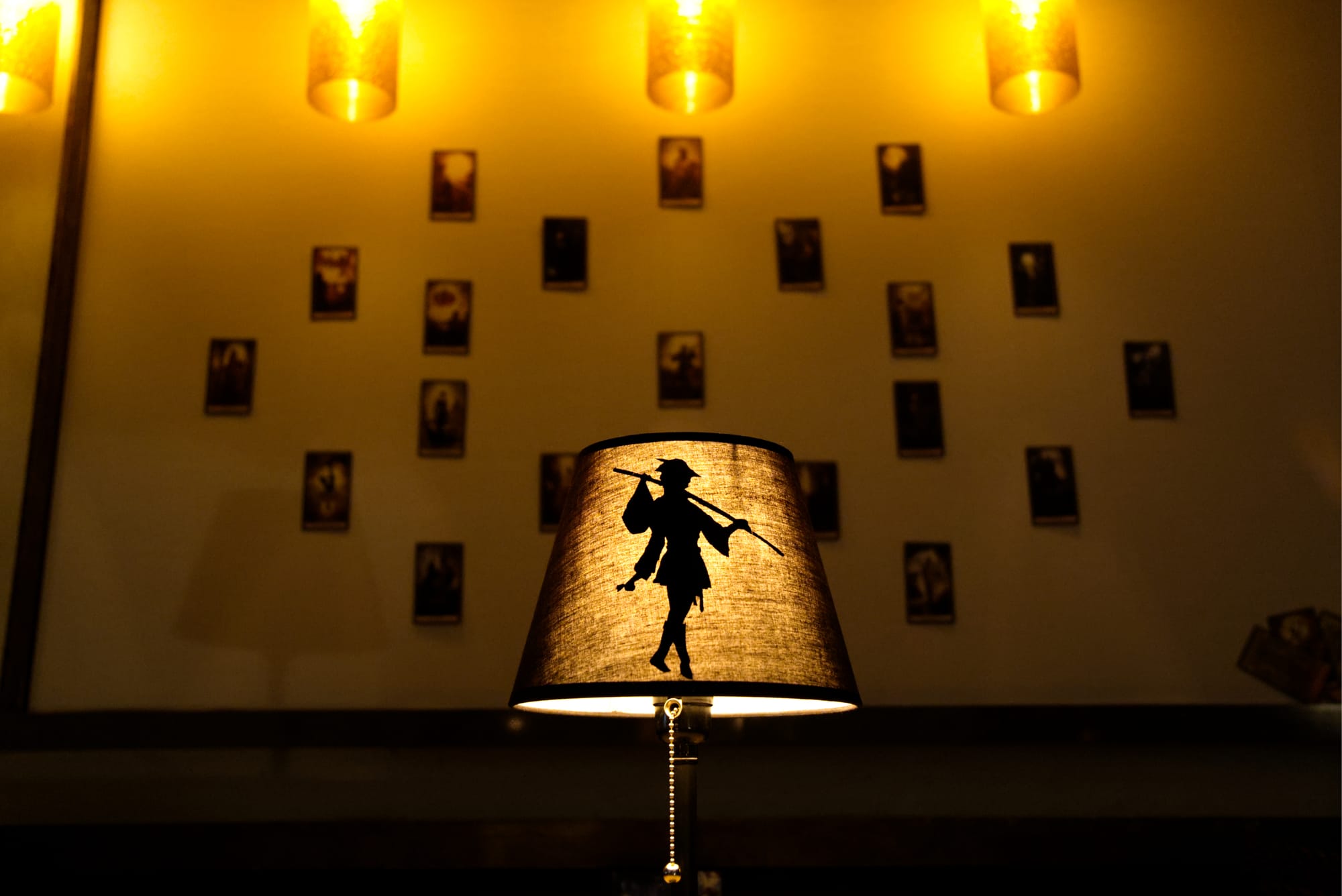
The tide is shifting. Both locations were active with excited couples and young friend groups when I visited, including the Shinjuku location which newly opened in summer 2024. Not every experience will be enjoyable for every audience – as cool as Ultraman is, this is certainly tailored to younger audiences and diehard fans. Yet the multi-sensual concept of a magical world enhanced by VR, and the technology driving it, remains magnificent and filled with potential. People are coming to check it out for themselves.
I’d love to see the company continue to expand, and for some of the company’s experimental ideas such as their café to make a return. Especially since international tourists have not only been returning to Japan, they’re visiting in record-breaking numbers beyond the pre-COVID peak in 2019. Many are actively seeking experiences only found in Japan. The advancements in VR technology in the intervening years have seen more advanced fully portable headsets launch like the Meta Quest 3 and the Apple Vision Pro (which the company was experimenting with in late 2024). Tyffon has the talent necessary to build on this impressive technology and evolve this concept even further.
Even as-is, there’s enough fun here to recommend visiting Tyffonium. The cost of attractions ranges from roughly $16-23 depending on if you partake in a seated or free-roaming experience, each offering something unique that will no doubt spark conversations with friends long after you remove your headset.

And make sure to bring a friend! As a journalist experiencing these attractions for review, I’ve been testing these attractions as a solo visitor. That was still fun, but many of these attractions feel like they are best enjoyed when sharing laughter with friends. Or, in the case of the free walking attractions, scream, and cry at the horrors unfolding before your eyes, as I overheard from other attendees.
Having played similar attractions in Japan, there’s nothing quite like the mysterious worlds offered by Tyffonium.
